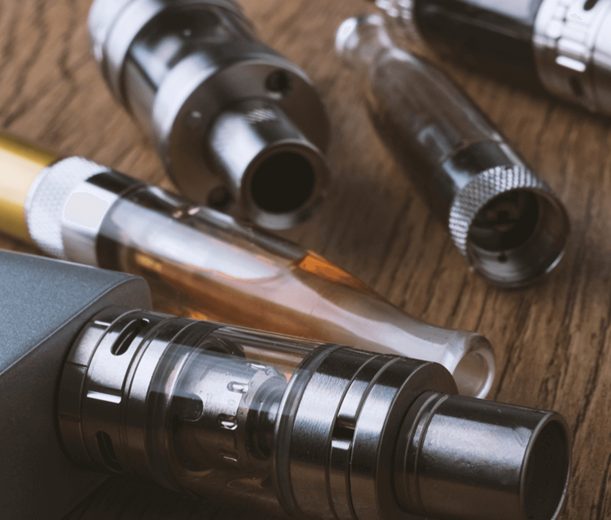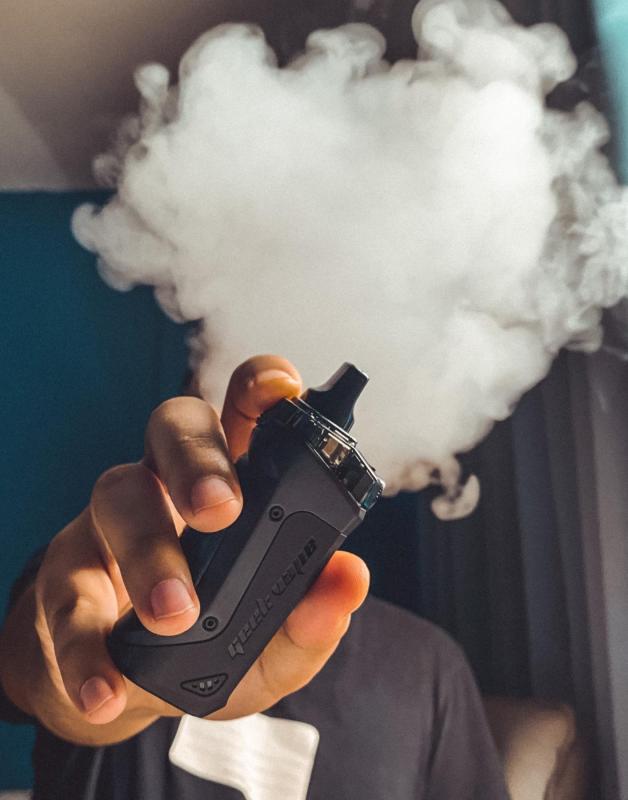In this comprehensive parenting guide on smoking, you will find…
 How to talk about smoking with your children
How to talk about smoking with your childrenIt’s a worrying scenario for parents to have to imagine, your child picking up a pack of cigarettes or a vape rather than a book. But despite a universal understanding that smoking is bad for health, parents still grapple with how to raise the subject with their children.
It may seem premature to sit down with your kindergartener child or primary schooler to spell out the dangers of smoking. But the best time to start talking to children about the topic is, before the potentially perilous teen years.
The messages you give your child today will help shape their decision-making in the future. So, how does one broach the hard topic? Here are three tips to get you started.
Look for the teachable moments. Say you see someone smoking and coughing on the street, bring it up. Why? Because your child will be able to clearly see cause and effect and it’s more powerful. Point out that smokers are more likely to get sick, have their appearance change, and die young. Appealing to vanity is a powerful technique.
It’s also important to ask open-ended questions such as, “How do you feel about smoking?” By letting your child have their say, you will make them feel valued. This will also help ward off poor attention spans and potential conflict.
You must also empower your child to resist peer pressure. Seeing people around them smoking is the single biggest influence. Explain the dangers and arm them with the tools to say no to their friends.
Ever since smoking was branded “cool” by advertisers and celebrities, health advocates have been working to bust the myths that surround this dangerous, if not deadly, habit.
Let’s start busting myths…
On average, a smoker can gain five kilos when quitting smoking, but the benefits of quitting smoking – longer life expectancy, lung capacity and brighter teeth to name a few – far outweigh any potential weight gain.
So, if you’re about to quit, stock up on healthy foods and plan to be active!
This is a huge misconception. While some homemade or organic foods are better for you than store-bought options, there is no such thing as a ‘healthy’ cigarette.
For some, a cigarette at the end of a stressful day may feel like a release. In reality, heart rate and blood pressure rise each time you smoke.
Try distraction as one means of quitting.
Take a walk, have a shower, get active, sing, dance…any alternative activity to avoid it.
Do these things often enough to break the habit.
There’s no healthy level of smoking. Every cigarette does your body damage – and puts you at risk of developing a dangerous habit.
You’re right, you are already at risk, but the benefits of quitting are instant!
Your heart rate will reduce within 20 minutes, the carbon monoxide in your blood drops in less than a day, and by this time next year, your risk of heart disease will be half what it is today.
In this Hey Adults video series we meet Life Ed kid consultant Mika, who discusses vaping. Mika encourages her audience to Take a Breath while she explains what a vape is, how they work and how vapes can contain nicotine.
Life Ed kid consultant Jimmy discusses vaping and offers advice for adults when chatting with children. Jimmy suggests to first ask your children what they know about vaping and then take some time to research the subject together.

Targeted to people trying to give up smoking, the e-cigarette is becoming increasingly popular. Although a relatively new addition to the ‘quitting’ market they are now visible practically everywhere, from bars and hotels to the beach and even trains!
But what do we actually know about e-cigarettes, and as parents, are we informed enough to have conversations with our children about them and their potential risks?
Nicotine is a toxic, colourless, oily liquid which is the chief component of tobacco. When inhaled as smoke the nicotine is absorbed through small air sacs in the lungs. It is highly addictive and can cause increased blood pressure and heart and lung problems.
E-cigarettes are battery-powered devices that mimic the process of smoking by heating a nicotine liquid into a vapour as the user inhales.
Simulating a cigarette, a user inhales the vapour through a replaceable cartridge. Within the cartridge is a mixture of nicotine as well as artificial flavourings such as menthol and the chemical Propylene Glycol (PG). As this liquid is inhaled and exhaled as an odourless vapour, using an e-cigarette is often called ‘vaping’.
Propylene Glycol or PG is the main chemical found in e-cigarettes; it is a form of mineral oil and alcohol. PG comes in lots of different forms, and is found in everything from antifreeze to snack foods. At its highest concentration or industry grade it is used in paints, enamels and engine coolants, however when levels are far less concentrated it is used at a pharmaceutical grade and can be found in ointments, topical drug products and sometimes food products.
For many people trying to give up smoking, the process of breaking the habit is the hardest. As e-cigarettes replicate the process of smoking, they address the physiological and behavioural aspects of smoking addiction. E-cigarettes also do not contain tobacco and the associated chemicals found within cigarettes including tar. As the user breathes vapour there is also a reduced risk of second-hand smoking. In fact, recent studies have suggested that 80-84% of e-cigarette users thought they were less harmful than traditional cigarettes.
There is currently no evidence that proves the effectiveness of e-cigarettes in helping users quit. Research carried out in the UK , USA , Canada and Australia involving 6000 current and former smokers found that e-cigarette users were far more likely to reduce their cigarette intake but no more likely to give up smoking. Similarly, Dr Tarun Weeramanthri , Executive Director of Public Health at the Western Australia Department of Health, told ABC Radio that ‘when we look at the evidence, many more people keep smoking both normal cigarettes and e-cigarettes’.
Nicotine in any form is highly addictive and as the vapour inhaled in an e-cigarette is not only water, the user inhales a large number of toxins. As e-cigarettes are still relatively new to the market no long-term studies have been carried out and therefore we do not know the long-term risks of inhaling Propylene Glycol on a regular basis. In terms of e-cigarettes appealing to our children; e-cigarettes are marketed in such a manner that may attract young people, often seen as glamourous, cool, sleek and available in a range of flavoured vapours like vanilla, banana split, and cola to name a few.
Although smoking rates in Australia are decreasing, and children are generally aware of the associated health risks, some will still be confronted with decisions about smoking. It is important to give our kids as much information as possible when it comes to smoking to empower them to make healthier and safer choices in the future. With regards to the e-cigarette, we hope that they will receive the same restrictions as tobacco products in order to reduce the risk of e-cigarettes appealing to children and young people.
Conversation starters you could try could be:
Why would they choose not to smoke?
What advice would you give your friends about smoking?
Use incidental moments when children see cigarettes in use when you are out and about or on the television/movies to create a conversation about smoking:
Did you know that most teenagers don’t smoke?
What advice would you give your friends about smoking?
If you are still looking to quit or want more information about the risks of smoking visit Quit Now.

Vaping, smoking and the teenage brain. It is interesting to know that the majority of young people do not smoke or vape. So why are some young people interested in VAPES.
What exactly is vaping?
What are some reasons a young person might want to vape?
Teenage brains are made to test, explore and challenge so that they can develop into autonomous adults. It’s a healthy part of human development. So here are some common reasons/myths that may lead a young person to try vaping:
What can I do as a parent to respond to some of these thoughts?
Where else can I get support for my teen?
Sources: Raising Children Network
We believe that preventative education should play an integral role in helping children and young people avoid the harms associated with smoking and vaping. Life Ed Qld recognises that we have a part to play in reducing the demand for e-cigarettes by the next generation. That’s why we’ve partnered with young people to create “Take a Breath”.
Take a Breath tackles the tough questions and misconceptions around vaping, using conversation driven by Australian students. It features Years 5-6 students who have genuine questions about smoking and vaping, alongside high school students who provide answers. The teenagers involved highlight the facts that surround the issue, while also using their unique voice and perspective to engage with their peers.
In the program Year 5- 6 students will investigate the issues around vaping and smoking and are encouraged to stop and “take a breath”, ask questions, seek answers and exercise critical thinking skills before making a decision.